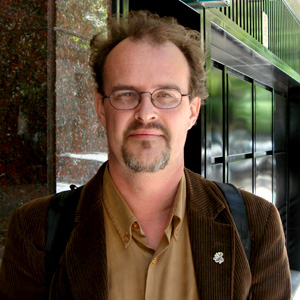
Director ejecutivo de la Fundación Daniel Langlois para el Arte, la Ciencia y la Tecnología de Montreal, Canadá, estuvo en Buenos Aires el 18 y 19 de octubre de 2007. La siguiente entrevista fue realizada durante su breve estadía por Ricardo Dal Farra.
Would you tell us about the major achievements of the Daniel Langlois Foundation in the last 10 years?
I think our major achievement has been to provide resources for the study and documentation of practice that lacked those forms of legitimization. As well as insisting on new media arts as a field of serious research, the Foundation has supported some of the best new media artists worldwide. Regardless of the amount of money we have spent on these activities -and over ten years it has been approximately 20 million dollars- we have played a central role in promoting the circulation of ideas and in the crystallization of the field of new media arts.
An e-art exhibition: why?
The exhibition e-art (http://www.fondation-langlois.org/e-art/e/) was conceived as a rather local endeavour, meaning Montreal and Quebec, in order to allow our local public to see the works by some of the best artists in the field. It wasn’t possible to show all of the projects we supported, so we imposed some limitations on ourselves, such as no public art works that involve managing off site installations, and all the logistical difficulties that entails. Other limitations or constraints were imposed by sponsors and other factors, such as including Quebec and Canadian artists since the Canada Council for the Arts and the Conseil des arts et des lettres both contributed significant sums of money to the overall budget of the exhibition. We wanted also to have women represented and at least one young artist.
What would you like to see in the future for the Daniel Langlois Foundation?
I would hope the Foundation will continue to build on the excellent historical groundwork accomplished in the past ten years. Probably there will be more emphasis on the development of Web platforms for exchange and participation, and also more focus on projects dealing with art, technology and the environment.
What could you tell us about your experience in media arts before joining the Daniel Langlois Foundation?
I have been involved in media arts since the beginning of the 1980s. Ever since I was at Concordia University I have been involved with video art and through video art I was led to audio art and to new media arts. When I started working at the Canada Council for the Arts as the Media Arts Officer responsible for the Video, Audio and Computer-integrated Mediafunding program, as it was called in those days, I was very involved in the development of the practice in Canada. Then, from 1991 to 1998, I was Curator of Media Arts at the National Gallery of Canada, which is the largest and most important art museum of Canada. The National Gallery has one of the most important collections of video art in the world that includes work by contemporary artists such as Michael Snow, Stan Douglas, Janet Cardiff, Antonio Muntadas and others working in a range of media arts. During my tenure there, I was able to expand the collection to include interactive works by Luc Courchesne, Lynn Hershman and others. I joined the Foundation in early 1998 to organize and launch it. The rest is history, as they say.
How do you see Latin America and Argentina in terms of digital culture and «e-arts»?
I think people in Latin America, in Brazil, in Argentina, in Chile, are quite sophisticated and often lack financial and technical means. So it seems appropriate for us to make efforts towards supporting development in the region. Also, it looks as if the Canadian government wants to have a greater presence on the economic front in certain Latin-American Countries, which means that cultural exchanges might increase. For us it seems easy to contribute to certain kinds of exchanges, through residencies and other means. Plus, being francophone, latin in some sense -even though we are clearly influenced by our British past- there are certainly cultural commonalities.
Would you tell us something about your own texts?
Over the years I have written quite a bit, in exhibition catalogues and in art journals and magazines. I should say that I also published a book in 1988 entitled Pornography in the Urban World (Art Metropole; Toronto). I am working on a book that will compile some of my previous writing about video art with some new texts about the growth of video art from a marginal practice to a mainstream feature of the contemporary art world. I have also started to research, and eventually I will write about, artists’ instruments, a comparative study of instrument making and use in contemporary music (electroacoustic and electronic music) and in the visual arts (video art, audio art and new media art).
Links de referencia:
Fundación Langlois para el Arte, la Ciencia y la Tecnología

